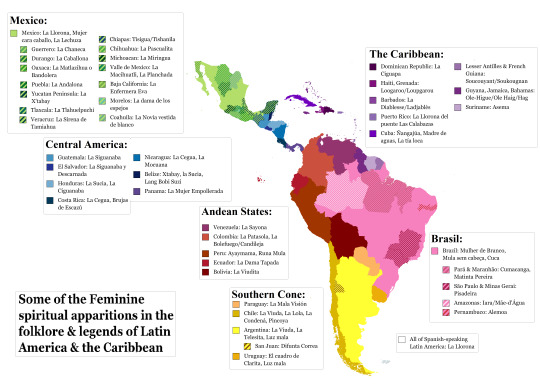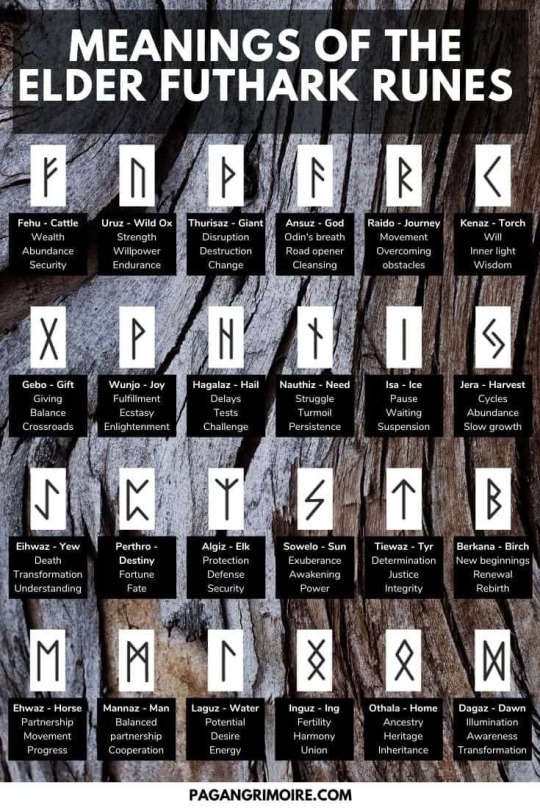Text
So, I want to get back into ancestor work but— last time I got chapped by my great grandmothers…
I set my intention then I fell asleep (Not part of the plan but doze off every time I meditate) everything’s fine and cool then all of a sudden this woman I have never seen before comes in my dream. She seemed familiar in a sense. Then another woman popped up. I was excited because at this point I knew I did it! I invited them. I wanted to know more about my family since no one talks to me about it. I wanted an ancestor, singular, to talk to and figure things out.
I got two to accept! I was so happy until… they opened their mouths.
They started yelling at me and chewing me out about how I’m so rude to my family and etc. I sat there stunned.
I looked over and saw another great grandmother of mine. This one I met in life before she passed. She was chilling just watching as my other grandmothers ripped me a new one. Anyways both ladies were pissed at how I was “acting” I literally said, “I don’t know y’all like that and you don’t know me! You don’t know your living family anymore but either!”
Things got heated that said some real messed up shit and I woke up.
The great grandmothers in question. My grandpa on my mom’s side’s mom. My grandma on my dad’s side’s mom.
Keep in my I don’t even know these women. One died before I was born and the other I had just found out existed after her death.
The third great grandmother was my nana’s mother on my mom’s side. The one I met. She was sweat in life and had been through a lot. She was always nice to me even if she didn’t know who I was half the time.
Since then I haven’t gotten anything really. My ancestor are obviously still present as a collective but no one comes forth individually anymore. I think I prefer or this is way. I feel them near from time to time and that’s about it.

4 notes
·
View notes
Text




A lovely Quinzou to everyone! I got dressed in my best ritual clothes, packed up my Stella Maris rosary (that Moonshadow loves to munch on..), enjoyed some live Acadian music and had an intimate little ritual for Mary.
26 notes
·
View notes
Text
Some Lughnasadh Ideas
What is Lughnasadh
Lughnasadh or Lammas is one of the main cross-path Pagan holidays on the Wheel of The Year. It’s a celebration of the grain harvest which is an important event across almost all cultures and pantheons. Because of the themes of sowing/reaping and harvest, it’s also a holiday that represents the culmination of hard work, and crafters and creativity. Lughnasadh is time to celebrate the start of the harvest season, with the vegetable harvests in Mabon and Samhain to follow. This is a holiday of having (or going to have) plenty, and is an excellent time to share the wealth if you’re able. If you’re a creative person it’s a brilliant time to start a new project or take up learning a skill you’ve always wanted to try.

Food
- Madeira Cake
- Artisan Breads (sun dried tomato or summer/red fruit, veg, spices included)
- Honey (in tea, on cakes, on summer fruits)
- Sweetcorn (seasoned with chilli, butter, red coloured spices)
- Potatoes (seasoned with paprika, chilli, curried)
- Apples (ciders, cakes, pies)
-Cinnamon

Deities
- Lugh
- Renenutet
- Ceres
- Adonis
- Demeter
- Osiris
- Parvati
- Pomona
- Vulcan
- Tammuz

Offerings
- Breads (home made, honey cakes etc)
- Mead
- Cider
- Red, yellow, orange flowers
- Summer fruits
- Dance
- Acts of generosity
- Sunflowers

Things to Do
- Feast! Especially outdoors
- Hill walking
- Plant an autumn ready garden
- Start a new skill or hobby
- Do something creative
- Pick berries
- Bake a fruit pie or some bread
- Make sun water
- Charge crystals, magical items etc
- Perform luck / wealth magic
- Meditate in the sun
20 notes
·
View notes
Text
Here me out: You yourself are an altar for your ancestors if you don’t have the room to make one…
Like you have their DNA and generational trauma. You build an altar for them externally but are an altar to them INTERNALLY JUST BY BEING ALIVE 🫠
Am I wrong?!

0 notes
Text

Some of the feminine spiritual apparitions in the folklore and legends of Latin America & the Caribbean
There are many types of female ghost. They are typically (but not always) dressed in a white or red dress or similar garment, reportedly seen in rural areas and associated with local legends of tragedy. Legends are found in many countries around the world. Common to many of these legends is an accidental death, murder, or suicide, and the theme of loss, betrayed by a husband or fiancé, and unrequited love. Many of these entities are also said to appear near water, like the Sirens of Greece or the washerwomen of the Celtic people.
531 notes
·
View notes
Text

“Midsummer Eve Bonfire on Skagen Beach” by Holger Drachmann (1879)
3 notes
·
View notes
Text
Forget not the Summer Solstice
Today's the day. Dust off your altars, break out those rituals, and prepare your sacrifices, my friends. The spirits are hungry this year and you don't want to find yourself on the menu!

119 notes
·
View notes
Text
I’m my research around the Norse pagan sphere I’ve learned some things about runes that I didn’t know before. Here are the three main rune types there are are far more.

Elder Futhark - 2nd Century
Rune, UCS, Transliteration, IPA Proto-Germanic name Meaning
f ᚠ f /ɸ/, /f/ *fehu
"cattle; wealth"
u ᚢ u /u(ː)/ ?*ūruz
"aurochs", Wild ox (or *ûram "water/slag"?)
th,þ ᚦ þ /θ/, /ð/ ?*þurisaz
"Thurs" (see Jötunn) or *þunraz ("the god Thunraz")
a ᚨ a /a(ː)/ *ansuz "god"
r ᚱ r /r/ *raidō "ride, journey"
k ᚲ k (c) /k/ ?*kaunan
"ulcer"? (or *kenaz "torch"?)
g ᚷ g /ɡ/ *gebō "gift"
w ᚹ w /w/ *wunjō "joy"
h h ᚺ ᚻ h /h/ *hagalaz "hail" (the precipitation)
n ᚾ n /n/ *naudiz "need"
i ᛁ i /i(ː)/ *īsaz "ice"
j ᛃ j /j/ *jēra- "year, good year, harvest"
ï,ei ᛇ ï (æ) /æː/[9] *ī(h)waz "yew-tree"
p ᛈ p /p/ ?*perþ-
meaning unknown; possibly "pear-tree".
z ᛉ z /z/ ?*algiz "elk" (or "protection, defence"[10])
s s ᛊ ᛋ s /s/ *sōwilō "sun"
t ᛏ t /t/ *tīwaz "the god Tiwaz"
b ᛒ b /b/ *berkanan "birch"
e ᛖ e /e(ː)/ *ehwaz "horse"
m ᛗ m /m/ *mannaz "man"
l ᛚ l /l/ *laguz
"water, lake" (or possibly *laukaz "leek")
ŋ ŋ ᛜ ŋ /ŋ/ *ingwaz "the god Ingwaz"
d ᛞ d /d/ *dagaz "day"
o ᛟ o /o(ː)/ *ōþila-/*ōþala-
"heritage, estate, possession"
Anglo-Saxon runes
Unicode, Name, Name meaning, Transliteration IPA
ᚠ feh (feoh) wealth, cattle f /f/, [v] (word-medial allophone of /f/)
ᚢ ur (ūr) aurochs u /u(ː)/
ᚦ ðorn (þorn) thorn þ /θ/, [ð] (word-medial allophone of /θ/)
ᚩ os (ōs) heathen god (mouth in rune poem?) o /o(ː)/])
ᚱ rada (rād) riding r /r/
ᚳ cen (cēn) torch c /k/, /kʲ/, /tʃ/
ᚷ geofu (gyfu) gift g /ɡ/, [ɣ] (word-medial allophone of /ɡ/), /j/
ᚹ wyn (wynn) mirth w /w/
ᚻ hægil (hægl) hail h /h/, [x], [ç]
ᚾ næd (nēod) plight n /n/
ᛁ is (īs) ice i /i(ː)/
ᛡ/ᛄ gær (gēar) year j /j/
ᛇ ih (īw) yew tree ï /i(ː)/ [x], [ç]
ᛈ peord (peorð) (unknown) p /p/
ᛉ ilcs (eolh?) (unknown, perhaps a derivative of elk) x (otiose as a sound but still used to transliterate the Latin letter 'X' into runes)
ᛋ/ᚴ sygil (sigel) sun (sail in rune poem?)
s /s/, [z] (word-medial allophone of /s/)
ᛏ ti (Tīw) (unknown, originally god, Planet Mars in rune poem?) t /t/
ᛒ berc (beorc) birch tree b /b/
ᛖ eh (eh) steed e /e(ː)/
ᛗ mon (mann) man m /m/
ᛚ lagu (lagu) body of water (lake) l /l/
ᛝ ing (ing) Ing (Ingui-Frea?) ŋ /ŋg/, /ŋ/
ᛟ oedil (ēðel) inherited land, native country œ /ø(ː)/
ᛞ dæg (dæg) day d /d/
ᚪ ac (āc) oak tree a /ɑ(ː)/
ᚫ æsc (æsc) ash tree æ /æ(ː)/
ᛠ ear (ēar) (unknown, perhaps earth[16]) ea /æ(ː)ɑ/
ᚣ yr (ȳr) (unknown, perhaps bow[18]) y /y(ː)/
Youger Futhark - 8th~12th Century
The names of the 16 runes of the Younger futhark are recorded in the Icelandic and Norwegian rune poems. The names are:
ᚠ fé ("wealth")
ᚢ úr ("iron"/"rain")
ᚦ Thurs ("thurs", a type of entity, see jötunn)
ᚬ As/Oss ("(a) god")
ᚱ reið ("ride")
ᚴ kaun ("ulcer")
ᚼ hagall ("hail")
ᚾ/ᚿ nauðr ("need")
ᛁ ísa/íss ("ice")
ᛅ/ᛆ ár ("plenty")
ᛋ/ᛌ sól ("Sun", personified as a deity—see Sól (Germanic mythology))
ᛏ/ᛐ Týr ("Týr, a deity")
ᛒ björk/bjarkan/bjarken ("birch")
ᛘ maðr ("man, human")
ᛚ lögr ("sea")
ᛦ yr ("yew")
From comparison with Anglo-Saxon and Gothic letter names, most of these names directly continue the names of the Elder Futhark runes. The exceptions to this are:
• yr which continues the name of the unrelated Eihwaz rune;
• thurs and kaun, in which cases the Old Norse, Anglo-Saxon and Gothic traditions diverge.
Min Kilder (My Sources):
Elder Futhark|https://en.m.wikipedia.org/wiki/Elder_Futhark
Anglo-Saxon Runes|https://en.m.wikipedia.org/wiki/Anglo-Saxon_runes
Younger Futhark|https://en.m.wikipedia.org/wiki/Younger_Futhark
5 notes
·
View notes




